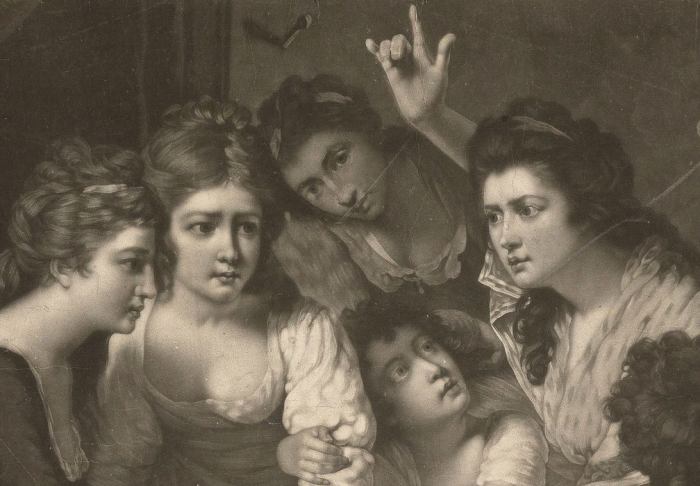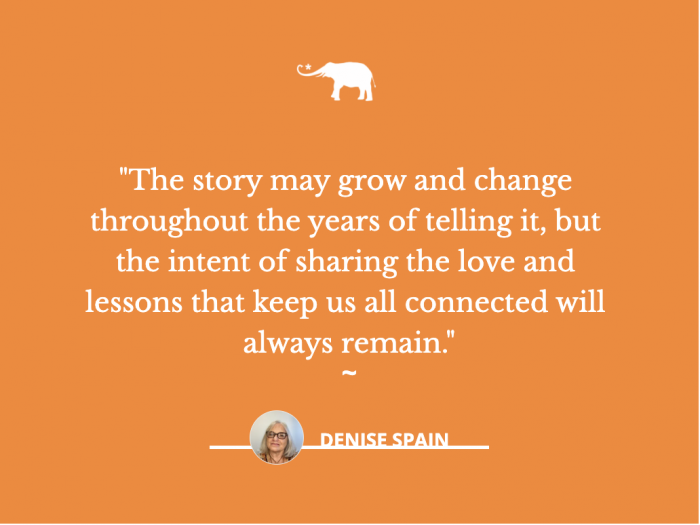Grandpa has told this story 100 times.
And it goes something like this.
You kids were all gathered in the living room, yelling at each other and the TV, fighting over which team had the best quarterback, even though you all knew the Cowboys were going to win—except for that one year when they lost. It was the same argument every Thanksgiving. I guess you could call it an “Ashworth family tradition.”
All of a sudden, we heard a loud crash followed by screeches that sounded a lot like Trigger, our family cat (God rest his soul) and Grandma were in a fight to the death. We all rushed into the kitchen to find that the fight was ongoing and that Trigger was winning.
Grandma’s beautiful blue bowl that she had brought home with her from Germany was shattered on the floor, surrounded by her famous buttery mashed potatoes. There was a collective groan as we watched Trigger helping himself to the first serving of the turkey that was to be the star of our holiday meal.
Grandma just stood there, tears running down her flour-stained cheeks as we all collectively realized the Thanksgiving Dinner we had all been waiting for had been ruined.
After we all go around the table and say what we are thankful for, that is the first story that grandpa tells as we begin our feast each year. Everyone jumps in with their version of what happened that year, each sharing a different recollection of how we all chipped in to save the day.
There’s a lot of laughter and tears as the memories flow of holidays before Grandma left us.
Storytelling has always been an important part of life. As Josh Campbell says in his TedTalk, “If you are living right, storytelling has to be a part of your life.”
Our lives would be less colorful and we would lose so many valuable lessons if we weren’t willing to listen and to tell our stories.
But what makes a good storyteller?
I have considered myself a storyteller since I was a little girl and have recently decided to make it an integral part of my new job as a live-in grandma and keeper of the family history.
I have learned that even the youngest are curious to know about the adventures and mishaps of the ones who came before them, the ones whose pictures have a prominent place on the living room walls. We all want to keep the memories alive and keep everyone connected in ways that bring the past to life, whether it is a story about a walk in the park yesterday or great Grandpa’s five-mile walk in the snow to get to school.
How do we do that in a way that engages the littlest and most distracted to the ones who have heard the story a thousand times and still want to hear it again?
>> Timing
The first thing we want to do is make sure it is the appropriate time, being mindful of your audience.
The best time might not be right after everyone is full of turkey and pecan pie, ready for a nap in front of the fireplace. Also, little Sylvia and her twin brother Sam might not be quite ready yet to hear about the time Uncle John drank too much wine on the night before Christmas.
>> Connection
Second, choose your story based on emotional connection.
We have all seen a photograph of a dapper guy in his sailor blues sitting in a place of honor on the bookcase, but most of the people in the room aren’t familiar with his significance to the family history. Begin the story by creating a silver thread, a bond, between the subject and the listeners. Make it personal.
>> Visualization
And thirdly, paint a picture helping people visualize the story.
Be specific with the details. What color was the dress great-great Grandma was wearing at the dance when the sailor proposed? What music was playing? Did she cry or laugh when she said “Yes”?
>> Presentation
And last, but not least, present it as a gift to be treasured and retold for many years to come.
The story may grow and change throughout the years of telling it, but the intent of sharing the love and lessons that keep us all connected will always remain.
~













Read 2 comments and reply